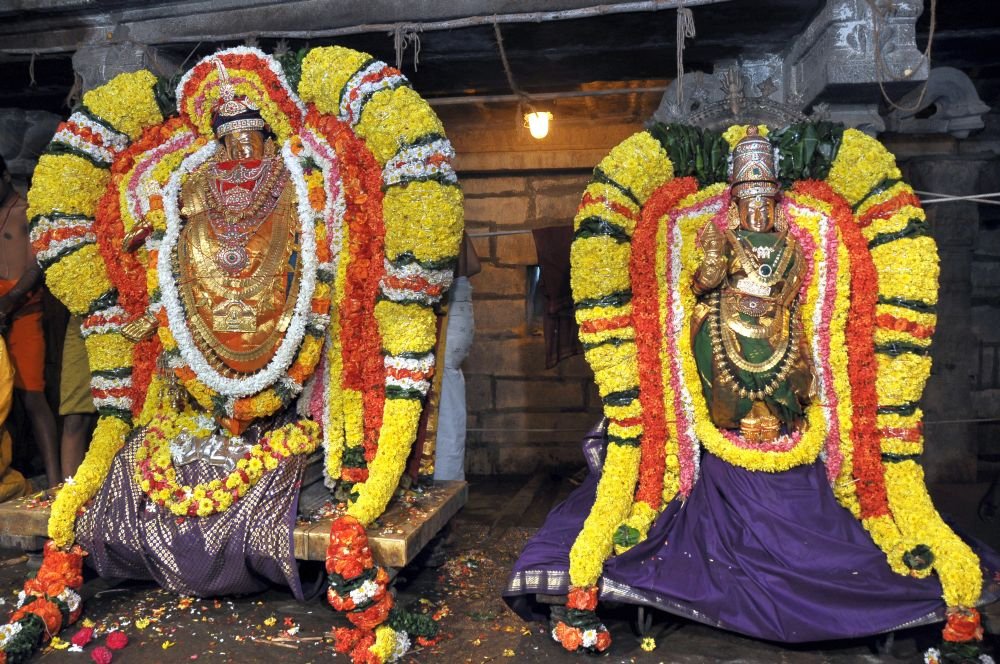A Shaivite festival known as Arudra Darshan or Arudra Darisanam is celebrated during the Tamil month of Margazhi (December to January). The date of Arudra Darshan 2023 is January 6 (Friday). Arudra Darshan will cease to exist in 2022. The cosmic dance of Nataraja, a Shiva-like form, is the focus of the festival. The term “golden red flame” is Arudra. The dance is performed by the deity as a reddish-gold flame. In Hindu astrology, a Nakshatra, or birth star, is called Ardra, Arudra, or Thiruvathirai. Shiva is connected to the star.
Importance of Arudra Darshan
According to the Hindu calendar, Arudra Darisanam is a very lucky day. Five activities are symbolically represented by Shiva’s cosmic dance. Embodiment, Destruction, Creation, and Release are their names. To put it another way, it stands for the never-ending cycle of creation and destruction. Every particle is a part of Shiva’s cosmic dance, which generates all of the universe’s energy. This ecstatic dance is celebrated at Arudra Darshan.
The Arudra Darshan ceremony at Chidambaram Nataraja Temple is well-known and popular with devotees. Additionally, it signifies Margazhi Brahmotsavam’s end.
The Tiruvalankadu Temple, Tiruvarur Temple, Nellaiappar Temple, Kutralanathar Temple, Kapaleeswarar Temple, and others also hold grand celebrations of it. Additionally, it is observed in numerous other Shiva temples worldwide. Sri Lanka, Malaysia, Singapore, South Africa, Australia, and other countries celebrate the festival as well. where there is a significant Tamil population.
When is Arudra Darshan?
Together with the Arudra Birth Star, it occurs in Margazhi on Purnima, or the night of the full moon. Additionally, it is the shortest night of the year. The majority of people who celebrate the festival are Tamil.
At the Chidambaram Shiva Temple in Tamil Nadu, Arudra Darshan is celebrated to its greatest extent. On this auspicious day, the temple performs the cosmic dance of Shiva.
Lord Nataraja Urchavam is the Tiruvannamalai Temple celebration of Nataraja’s or Shiva’s cosmic dance in the month of Margazhi. On the day of Ardra Nakshatra in Margazhi, the festival is also celebrated at Tiruvannamalai Arunachaleswarar Temple. On this day, there will be special Poojas and rituals.
Arudra Darshan at Chidambaram Nataraja Temple
One can worship Shiva as Nataraja at the Chidambaram Nataraja Temple in Tamil Nadu. He is in the Ananda Tandava pose that can be seen here. The most significant festival in this temple, Margazhi Brahmotsavam, comes to an end at the same time as the festival.
The Thillai Nataraja temple, which is also known as the Chidambaram temple, is named after the Thillai forest that once grew where the temple is now. It was constructed in the 10th century, when Chidambaram served as the Chola kings’ capital. It is one of the Pancha Bhootha temples and symbolizes the sky, or space. It is at the center of the magnetic equator of the world. The temple is 235 kilometers away from Chennai, the state capital.
The Legend behind Arudra Darshan
Legend has it that Shiva, dressed as Nataraja, performed the cosmic dance at Chidambaram for Adi Shesha and Vyagrapaadar, two devotees. Vishnu rests on Adishesha, a seven-headed snake in the Milky Way Ocean. After hearing about it, he wanted to see this cosmic dance of creation. He was given instructions by Shiva to transform into Sage Patanjali and travel to the Thillai forest to perform the dance. Sage Vyagrapaadar was a Shiva devotee who attended the Ananda Tandava by performing rigorous Tapas and penance. At Chidambaram, Lord Shiva danced for these two devotees.
A group of sages once lived in the mangrove forests of the Thillai species. They believed they had magical abilities and that their “mantras” and rituals could even control God. Shiva appeared in the form of a simple mendicant named Bhikshadanar and entered the forest to subdue their arrogance and ego. He was very handsome, and he was accompanied by Mohini, Vishnu, who played the role of his lover.
The attractive mendicant and his wife enchanted the rishis and their wives. However, when the sages observed their wives pursuing the mendicant, they became enraged. Through their magic, many “serpents” came to life. However, the mendicant adorned his matted hair, waist, and neck with them. Shiva then donned a loincloth made of the skin of a ferocious tiger that the wise men had invoked. The angry sages summoned a powerful demon named Muyalakan, who stood for arrogance and ignorance, with all of their spiritual might. However, Shiva immobilized the demon by stepping on his back. He then danced the “nanda Thandava,” which means “the dance of eternal bliss.” The sages fell at his feet and gave up their arrogance and ego when they found out who the mendicant was.
The five divine acts of creation, sustenance, dissolution, concealment, and grace bestowment are represented by Ananda Thandavam.
The Symbolism of Ananda Thandava
The demon Nataraja finds beneath his feet symbolizes his victory over ignorance. His destructive abilities are symbolized by the fire in this hand. He signifies that he is the savior of all life by raising his hand. The universe is represented by the back Ring. The beginning of life is symbolized by the drum in his hand. In the Chidambaram Temple, Shiva is also worshipped as Chidambara Rahasyam, also known as Akasa Lingam or the “formless form.”
In Kerala, the Thiruvathirai festival, which is dedicated to Shiva and Parvati, is celebrated as Arudra Darshan.

